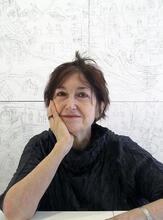Gladys Heldman
Gladys Heldman originally planned to pursue a PhD in medieval history, but after marrying avid tennis player Julius Heldman, she began playing tennis competitively. After she stopped competing, she channeled her love for the game into creating, editing, and publishing World Tennis Magazine, becoming the sole voice for women’s tennis coverage. In 1962, Heldman sponsored 85 women players from overseas to participate in the U.S. Open at Forest Hills. She formed an alternative tour when players like Billie Jean King were upset by the disparity in prize money between the men and the women. She further crusaded for equal recognition for women tennis players by filing several lawsuits against the USLTA. Her work was recognized in 1979 when she was inducted into the International Tennis Hall of Fame.
Family & Marriage
Gladys Heldman, born in New York City on May 13, 1922, to scholarly Jewish parents, was an unlikely person to become a leader in women’s tennis. Yet women tennis players today owe their equal status in the sport to her important efforts.
Her father, George Z. Medalie, a famous lawyer and jurist, and her mother, Carrie, a Latin and Greek scholar, raised their daughter in New York and then sent her to Stanford University in 1939, where she earned a bachelor’s degree and a Phi Beta Kappa key in three years. Two days after graduation, she married Julius Heldman, an avid tennis player with a Ph.D. in physical chemistry who became a chemistry professor at the University of California, Berkeley. Heldman studied medieval history there, received a master’s degree in the subject, and planned to pursue a doctorate. She also had a daughter, Carrie.
Competitive Tennis & World Tennis Magazine
In 1949, however, her husband’s career took him to Shell Oil Company and Texas. Julius Heldman, who had played tennis for UCLA as a teenager, encouraged his wife to take up tennis after their second daughter, Julie, was born. Heldman became proficient, earning a number-one ranking in Texas in the early 1950s. In 1954, she got a berth in the Wimbledon draw, although she lost in the first round.
When she stopped playing competitive tennis, Heldman channeled her love for the game in a different direction. In 1953, she created, edited, and published World Tennis Magazine and became the sole voice for women’s tennis coverage. Indeed, in the early 1950s, tennis was what longtime commentator Bud Collins called the “secret sport”—newspapers, magazines, and radio never reported on the game. In 1959, when the United States Lawn Tennis Association (USLTA) decided not to hold the National Indoor Championship because the competition had lost money the previous year, Heldman agreed to underwrite the losses. She ended up realizing a profit for the event. This contribution was the beginning of her active sponsorship of women’s tennis events.
Advocacy for Women’s Tennis
In 1962, Heldman sponsored 85 women players from overseas to participate in the U.S. Open at Forest Hills. During the winter of 1969, Heldman staged three tournaments for women. In 1970, Billie Jean King and her longtime friend and doubles partner Rosie Casals were so upset by the disparity in prize money between the men and the women that they threatened to boycott the upcoming U.S. Open. Heldman, their friend and adviser, suggested an alternative: She planned a women’s tournament to occur the same week as the Pacific Grove Open, the event preceding Forest Hills. Gaining financial support from her friend Joe Cullman, the president of Philip Morris, she formed the Virginia Slims tour. The first participants in the circuit, known as the “Houston Nine,” played in the first Virginia Slims Circuit tournament in Houston in late 1970; the players prominently accepted one dollar contracts from Heldman.
At first, the male tennis establishment, headed by Jack Kramer, punished the women who dared to play in the Heldman-sponsored events. But after a three-year power struggle that included lawsuits initiated by Heldman and King against the USLTA, a reconciliation was reached. Purses were brought into line, and the men and women professionals played at the same events. Part of the 1973 agreement, however, was for Heldman to give up her leadership role in the women’s organization. “I was out,” she was quoted as saying, “but the war was over, and that was the most important thing.” Shortly thereafter, Heldman sold World Tennis Magazine, which had become the most popular and influential magazine in the field, to CBS Publications.
When Heldman began her crusade for equal purse money and equal recognition for women tennis players, men’s prize money was fifteen times greater than women’s. By the time she retired, women tennis players were treated equally. The current generation of women tennis players owe their equal status to the important efforts of Gladys Heldman.
Legacy
Gladys Heldman was inducted into the International Tennis Hall of Fame in 1979. She died of a self-inflicted gunshot wound, in Santa Fe, New Mexico, in the home she shared with her husband, on June 22, 2003. Upon her death, her friend Billie Jean King said: “Without Gladys, there wouldn’t be women’s professional tennis. When I accepted that one dollar contract from Gladys more than thirty years ago, I knew we were all part of something special and that women’s tennis had been changed forever because of her vision.”
Collins, Bud. Modern Encyclopedia of Tennis. Canton: Visible Ink Press, 1980.
Collins, Bud. My Life with the Pros. New York: Penguin Publishing Group, 1989.
King, Billie Jean, with Cynthia Starr. We Have Come a Long Way. New York: McGraw-Hill, 1988.
LaFontaine, B. “Busiest Voice in a Busy, Busy Clan.” Sports Illustrated 20, June 22, 1964: 38-40+.
Williams, Lena. “Gladys Heldman, 81, a Leader in Promoting Women’s Tennis.” New York Times, June 25, 1993.












